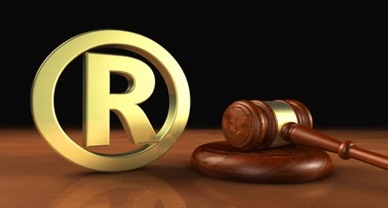Olympic and Retrolympic: Trademark Protection
The trademark dispute between Olympic and Retrolympic was a bit interesting owing to the dispute about the likelihood of confusion between the competing marks. The marks are Retrolympic and IOC trademark ‘Olympic.’ The Federal Supreme Court rules that the German Olympic Protection Act provides special trademark protection for Olympia.
The German Law provides special protection for the signs and terms related to Olympia. The Law for the Protection of the Olympic Emblem and the Olympic Signs (OlympSchG, German Olympia Protection Act) provides special protection for Olympia. There are several terms which it aims to protect which are “Olympia”, “Olympia”, “Olympic” and the Olympic emblem. The protection is against free and commercial use by third parties. Such protection is intended to promote any image against the goals of the Olympic ideal.
[Image Source: Getty Images]
Facts of the case
This case comes in when the Retrolympics applied for the word and the figurative mark Retroolympic at the German Patent and Trademark Office in 2012 (for Nice classes 28 (games and sporting goods); 35 (advertising) and 41 (sporting and cultural activities). The DPMA at first refused the trademark registration ‘Retroolympics’ providing reference to Olympic Protection Act but Federal Patent Court overturned the decision and the mark was published. Post-publication, IOC filed for an opposition. IOC is the proprietor of various earlier trademarks involving the word ‘Olympic.’ Since Retroolympic claimed almost identical goods and services which is for Olympics, there was a strong likelihood of confusion. But deciding, on the contrary, the Federal Patent Court ruled that the prefix Retro provides a different impression. IOC appealed to the Federal Supreme Court.
Federal Supreme Court
Federal Supreme Court ruled that the Olympic Protection Act does not exclude trademark protection. Referring to the Olympiarief decision of 2019, the Supreme Court ruled that the Olympia Protection Act does not preclude protection for Olympic signs that enjoy trademark protection that is ancillary to and goes beyond this particular special right.
Even though the Olympic Protection Act does not deal with the protection of Olympic signs under the trademark law, the Court explains that this, in any case, does not mean that the legislator intends to limit the protection of Olympic words and emblems even to the extent that they are under trademark protection. The Court upheld the IOC contention overturning the Patent Court’s decision. The Court ruled that the Patent Court was wrong in its decision concerning no likelihood of confusion.
The challenge of the Patent Court’s assessment of the graphic element of Retrolympic was successfully challenged by IOC. The assessment was about the fact that whether the fire of Retroolympic mark resembles the Olympic fire making the consumer think about the IOC even if familiar Olympic rings are missing. The Supreme Court stated that the Federal Patent Court’s assessment that the challenged sign was not characterized by the word element ‘-OLYMPICS’ was erroneous in law.
Nevertheless, the Federal Supreme Court noted that the rejection of likelihood of confusion by the Patent Court under the aspect of the serial sign was correct where the Supreme Court explains that such a likelihood of confusion of the serial sign exists above all if the signs coincide in an element which the public sees as the stem of several signs of an undertaking. The question of the direct likelihood of confusion has to be re-examined by the Patent Court in reopened appeal proceeding, the Supreme Court ruled. This re-examination will consist of assessing the distinctiveness and reputation of the opposing marks including the descriptive content of the prefix RETRO.
The Supreme Court made it clear that the IOC could not be denied the need for legal protection as the Olympic Protection Act sufficiently takes the legal position into account. The case has been referred back to the Patent Court for a complete review, stating that if in case the Patent Court again finds no likelihood of confusion, then the Supreme Court needs to re-examine the cancellation claims.
Author: Saransh Chaturvedi an associate at IP And Legal Filings, in case of any queries please contact/write back us at support@ipandlegalfilings.com.




